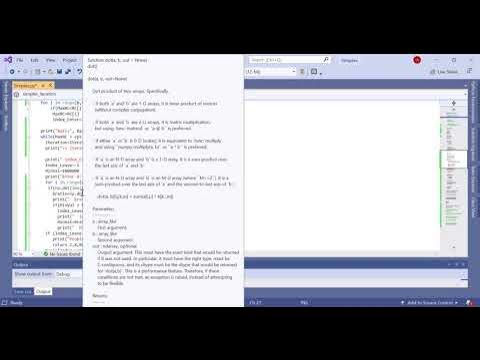Transportation problem||vogel's approximation[VAM]|Northwest corner||Least cost | by Kauserwise
Summary
TLDRThe video script discusses a transportation problem, introducing the concept of linear programming to find the most cost-effective solution. It explains the balance transportation problem, where supply must equal demand, and presents a methodical approach to identify and solve such problems. The script uses a numerical example to illustrate the process of balancing supply and demand, and calculates the total transportation cost. It emphasizes the importance of identifying the initial feasible solution and checking for optimality to minimize costs, ultimately providing a solution with a total cost calculation.
Takeaways
- 🚚 The script discusses a transportation problem, focusing on minimizing the total cost of transportation.
- 📋 It introduces the concept of a transportation problem as a special kind of linear programming problem involving the transportation of goods from sources to destinations.
- 🔄 The problem requires balancing supply and demand, ensuring that the needs of different destinations are met with the available supply from sources.
- 📈 The script outlines various techniques to solve transportation problems, including the use of tables and graphs to identify optimal solutions.
- 📊 It emphasizes the importance of identifying the initial feasible solution and then checking for optimality among the alternatives.
- 🔢 The process involves comparing demand and supply, and making decisions on how to allocate resources to achieve balance.
- 🔍 The script provides a methodical approach to finding the best solution, which includes calculating costs and identifying the most efficient routes.
- 🎯 It highlights the use of specific techniques such as the North West Corner method, the Least Cost method, and the Vogel's Approximation method for solving transportation problems.
- 📝 The script includes an example with numerical values to illustrate the steps and calculations involved in solving a transportation problem.
- 📊 It explains how to handle unbalanced transportation problems where demand does not equal supply, using additional columns and rows to account for the imbalance.
- 🌟 The script concludes by showing how to compute the total cost of the transportation solution and how to verify that the solution is balanced and optimal.
Q & A
What is the main topic of the script?
-The main topic of the script is about solving a transportation problem using linear programming techniques.
What does the script mean by 'balanced transportation problem'?
-A balanced transportation problem refers to a situation where the supply equals the demand, meaning there is no surplus or shortage.
What is an 'unbalanced transportation problem'?
-An unbalanced transportation problem occurs when the total supply does not equal the total demand, resulting in either a surplus or a shortage.
What is the objective of solving a transportation problem?
-The objective of solving a transportation problem is to minimize the total cost of transportation while meeting the supply and demand constraints.
How does the script suggest identifying the initial feasible solution?
-The script suggests identifying the initial feasible solution by finding a balance between supply and demand and using techniques such as the North-West Corner method, the Least Cost method, and the Vogel's Approximation method.
What are the three methods mentioned for finding the initial basic feasible solution?
-The three methods mentioned are the North-West Corner method, the Least Cost method, and the Vogel's Approximation method.
How does the script describe the process of checking the optimality of a solution?
-The script describes the process of checking the optimality by comparing the costs associated with each column and row, and ensuring that there are no unfilled demands or unutilized supplies that could reduce the total cost further.
What is the significance of the 'zero cost' columns in the script?
-The 'zero cost' columns represent opportunities to increase supply without increasing the total cost, which can potentially lead to a more optimal solution.
How does the script handle the situation when there is more demand than supply?
-The script suggests adding more supply or reducing demand to balance the situation, and then re-evaluating the solution to minimize the total cost.
What is the final solution presented in the script?
-The final solution presented is a total cost of 2850, obtained by multiplying the values of selected cells (supply and demand matches) and adding them up, which represents the minimum cost to transport goods from sources to destinations while maintaining balance.
Outlines

此内容仅限付费用户访问。 请升级后访问。
立即升级Mindmap

此内容仅限付费用户访问。 请升级后访问。
立即升级Keywords

此内容仅限付费用户访问。 请升级后访问。
立即升级Highlights

此内容仅限付费用户访问。 请升级后访问。
立即升级Transcripts

此内容仅限付费用户访问。 请升级后访问。
立即升级浏览更多相关视频

How To Implement the Simplex Algorithm with Python?

Analisis Sensitivitas : Penambahan Kendala Baru | Kelompok 10 Teknik Riset Operasi

Machine Learning Classification Using Linear Programming?

Metode linear programing | Metode Simplex | Matematika Bisnis | OR 2022

Operations Research 06A: Transportation Problem

Stochastic Programming with Recourse - a practical example
5.0 / 5 (0 votes)
